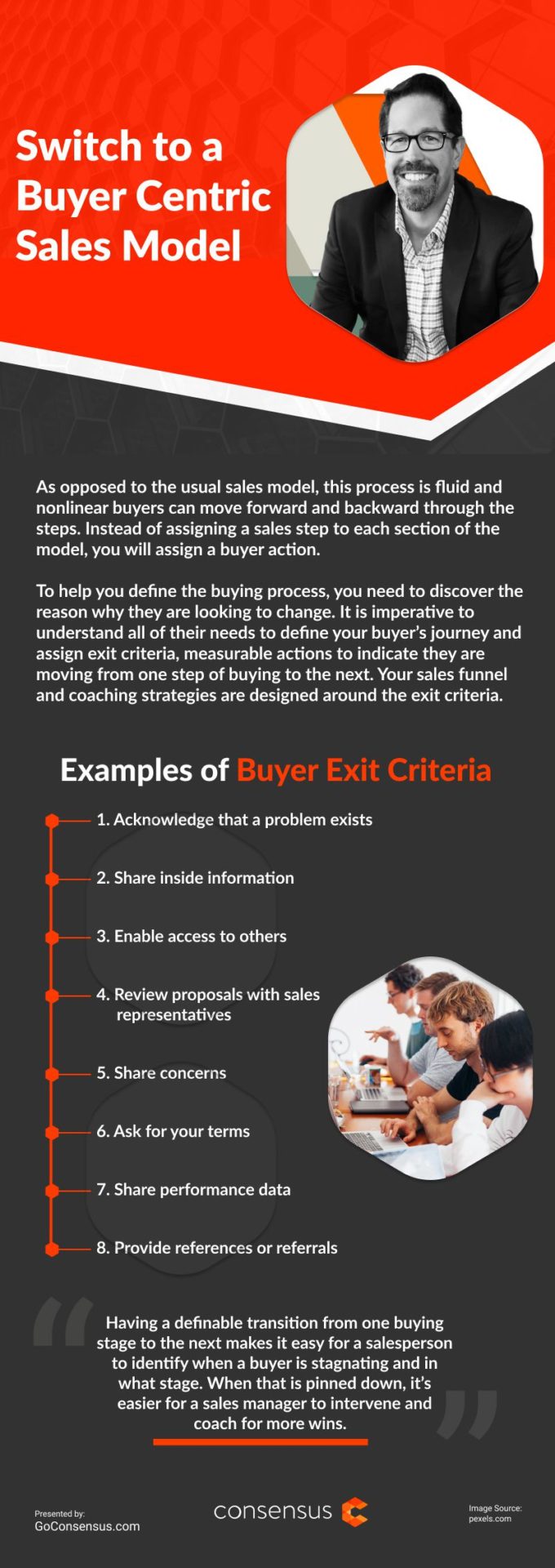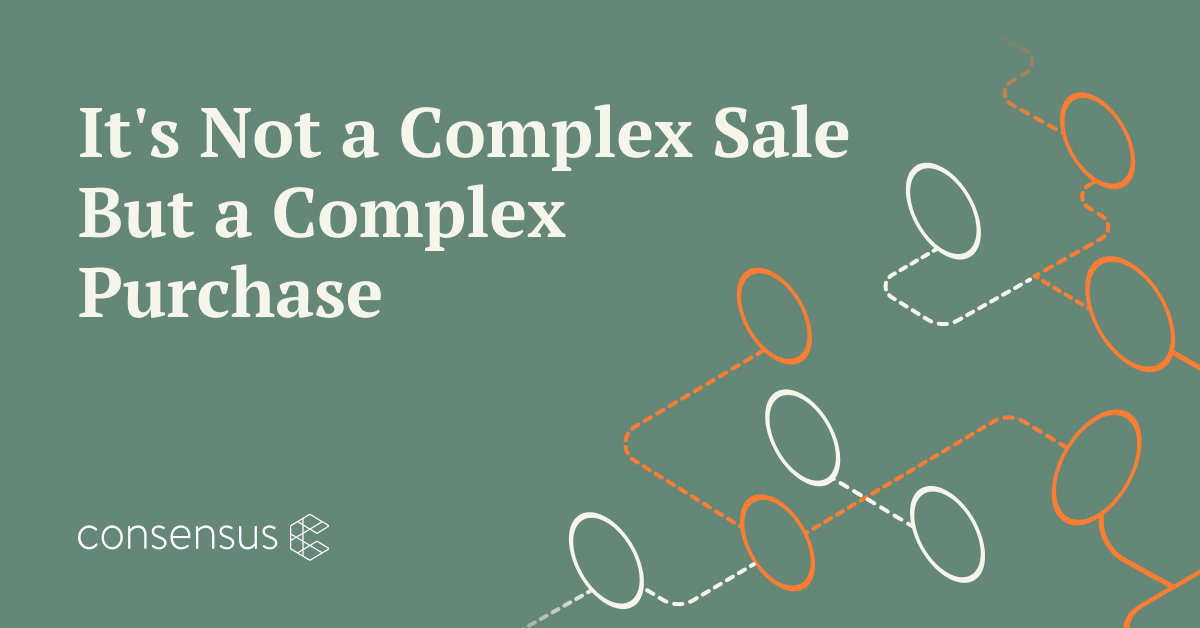Sales teams often have a sales process to guide reps and customers through the deal. However, these processes are frequently inaccurate, cumbersome, and disregard the buyers’ needs. They are created by sales ops or sales leadership, and focus solely on the steps taken to secure the sale. Sales managers who track these steps have little evidence to predict the likelihood of sales.
If you were to map out this process on paper, you would see how difficult it is for the buyer to make a purchase due to all the detours a company, and the buyer, can take during the buying process. It’s messy, convoluted, and easy to see how prospective companies are derailed from the final purchase.
Instead of focusing on the sales process, reps should concentrate on guiding the buyer through their process. Kevin Davis, the author of “The Sales Manager’s Guide To Greatness,” suggests shifting the sales funnel to a buyer enablement model that coaches the customer through buyer-centric sales. He states “understanding buying is where selling should start.”
What Is Buyer Enablement?
Buyer enablement is approaching the sale from the buyer’s perspective. This can get complicated as the prospective buyer can have multiple stakeholders with different viewpoints, but the goal is to understand all of these perspectives. The more you understand them, the more you can speak to those viewpoints and make the purchasing process easier.
Why Coach Buyer Enablement?
In the CSO Insight’s 2019 Sales Enablement Report, using a formal coaching approach tied to the customer buying process averaged a 14% improvement over a random approach to sales coaching. By focusing on the buyer’s needs and required outcomes, you are enabling faster purchase decisions that lead to a measurable increase in your sales and decrease your team’s wasted efforts on buyers that will not complete the purchase.
A Buyer-Centric Sales Model
So what does this model look like? Here’s a closer look at the different phases of Kevin’s model:
Need phase
1. Change
2. Discontent
Learning phase
3. Research
4. Comparison
Buy phase
5. Fear
6. Commitment
Value phase
7. Expectations
8. Satisfaction
How To Switch To A Buyer-Centric Sales Model
As opposed to the usual sales model, this process is fluid and nonlinear; buyers can move forward and backward through the steps. Instead of assigning a sales step to each section of the model, you will assign a buyer action. Companies you meet often think they’re in the Buy Phase in the model, but really they’re still in the Learn Phase. To help you define the buying process, you need to discover the reason why they are looking to change.
Their needs for why they are changing may be different than their solution needs. It is imperative to understand all of their needs to define your buyer’s journey and assign exit criteria, measurable actions to indicate they are moving from one step of buying to the next. Your sales funnel and coaching strategies are designed around the exit criteria.
Example Of Buyer Exit Criteria
Here’s an example of a potential buyer’s exit criteria in eight steps:
- Acknowledge that a problem exists
- Share inside information
- Enable access to others
- Review proposals with sales representatives
- Share concerns
- Ask for your terms
- Share performance data
- Provide references or referrals
Having a definable transition from one buying stage to the next makes it easy for a salesperson to identify when a buyer is stagnating and in what stage. When that is pinned down, it’s easier for a sales manager to intervene and coach for more wins.
How To Coach Buyer-Centric Sales
Once you have evaluated the patterns that your buyers typically go through, you can train your sales team to look for and ask for those actions. Deal coaching becomes relatively simple once you define your buyer’s journey. Instead of asking questions related to sales steps that base the likelihood of the sale on your team’s intuition, you will drive customer focus by asking questions tied to your buyer-centric sales model. Then use the evidence based on the buyer’s actions to predict your sales.
You can gain the most insight on how a sale is going by asking the question “what specific actions has the customer taken so far in the buying process?” By tracking your team’s progress with definable steps, you can start to identify team members who are struggling and which phase they are struggling in. This will help you know what phase to start coaching in and what changes to implement to improve numbers.
While every company thinks they’re customer-focused, you and your sales team will stand out over your competitors by putting yourselves in the role of the buyer. Identify the exit criteria for your customers, set those as call objectives for your sales team, design your sales funnel and coaching strategies around the exit criteria, and ask your team buyer-centric questions. By implementing focused sales coaching around buyer enablement, you will more easily predict buyer readiness, focus your team’s efforts, and increase your win percentage. You can eliminate buyer frustration and unnecessary sales effort and become an efficient sales team for all your future customers.
Presales is now in demand across the funnel. Scale presales instantly and shorten sales cycle with interactive video demos. If you’re looking for an automated buyer enablement tool, click here to learn how to deliver a better buying experience.
Infographic
Did you notice how frequently inaccurate sales processes are and disregard the buyer’s needs? Instead of doing this, reps should focus on guiding the buyer through their processes. Understanding what buying is will help you determine where selling should start. Learn more about buyer enablement and how it can make your sales team efficient.

